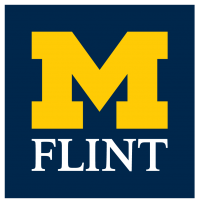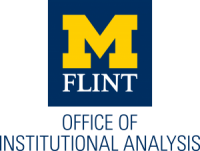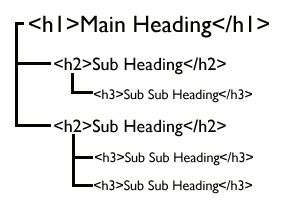Commonly Confused Graphic Design and Web Design Terms and Concepts
As we all move forward with both the new brand/identity roll out, as well as the web transition to Drupal, it will be increasingly important to be on the same page as far as the terminology we use to described various items, actions, and ideas.
The following are some of the more immediate terms (and uses) we should get a handle on:
The Official UM-Flint Logo:
Proper Use of this Logo:
Official UM-Flint Wordmark:
Proper Use of this Graphic:
Horizontal Department Signature Mark:
Proper Use of this Graphic:
Vertical Department Signature Mark:
Proper Use of this Graphic:
Horizontal School/College Signature Mark:
Proper Use of this Graphic:
Vertical School/College Signature Mark:
Proper Use of this Graphic:
Head’s Up
Perhaps the biggest confusion-causing culprit is the word header. This mini-glossary seeks to avoid all confusion that can arise from using the terms header, heading, and headline interchangeably. In the past, header has been used to describe any graphic, photo, or text (or combination thereof) appearing atop any page—print or digital. A similar ubiquitous meaning arose for the term logo. To be clear, UM-Flint has only one logo.
The following should help us all be more precise about what we mean when we talk about these things:
Headline:
When we talk about headlines, we really do mean the more traditional, more journalistic meaning. Headlines are text only. Headlines announce the contents of an article, or a blog post, or a Pillars news feature. There may be times when it may seem appropriate to refer to a headline as a title. Yet, title, as we will see with heading, has a dedicated meaning in the web context.
Title:
When we talk about a title (as in page title, not occupational title), more than likely we are talking about text that describes the contents of an entire web page. This usually mirrors the text that appears in a website’s navigation. To help illustrate the difference between a title and a headline, one might imagine a web page titled “Club Sports Highlights,” and that page including numerous headlines of individual club sports stories.
Heading (and Sub Headings):
Headings do not describe pages or articles. Headings describe sections of content within pages and articles. An entire blog post could be (will be) written about best practices related to proper heading/sub-heading use for improved readability, scannability, and overall structuring of web content. Don’t be afraid to use them. Headings (h1) and subheadings (h2) are your friends. More than that, they are readers’ friends. Nobody likes slogging through big blobs of never-ending text. Give eyes, and your websites’ users, a break.
Hero Image (or Hero Graphic):
Along with signature mark, the hero image is probably confused for a header more than any other graphic. In each case, what people are usually referring to is a large, visual attention-grabber. Whereas both signature marks and our old conception of headers almost always included text (think of the “department header”), the hero image is usually just a powerful image, a photo that tells a story all by itself. The new templates being created for the Drupal transition utilize (text-free) hero images.
Header:
Header means too many different things to too many different people. For the sake of clarity and to stave off confusion, let’s erase this term from our brand/web lexicon! ; )










